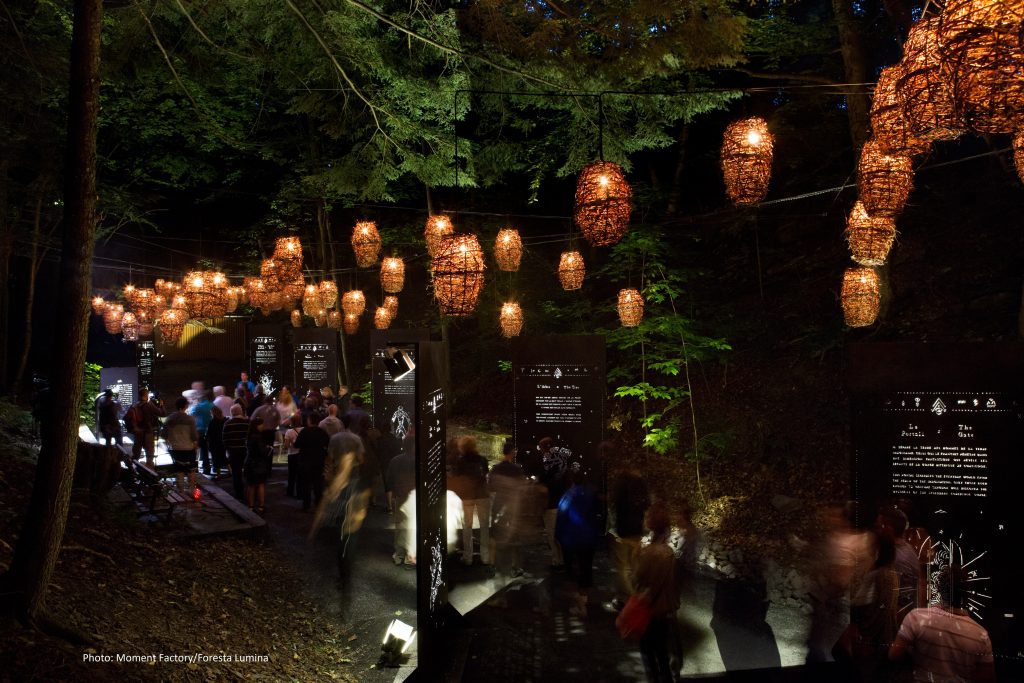Presenting “Seven Wonders of the Illuminated World”
From “Ancient” to “Natural” and “New,” generations of people across the world have marveled at the various Wonders of the World. As such, it seemed time for LD+A to gather seven esteemed lighting professionals to select “Seven Wonders of the Illuminated World.” Each panelist was tasked with choosing one project that offered significant emotional and/or technological lighting design that stands above the crowd; they were not permitted to endorse or include any project on which they had worked. These wonders span the globe—from an ancient Grecian citadel to whimsical Canadian woodlands.
While these types of lists often elicit strong positive and negative responses, the following wonders are meant to teach and inspire, not serve as the “Seven Best” list. It’s important to note that the title of this list omits “The”—implying that there are many more illuminated marvels out there to discover. So, sit back, relax, enjoy a trip around the globe and feel free to share your own personal favorite illuminated wonders with us.
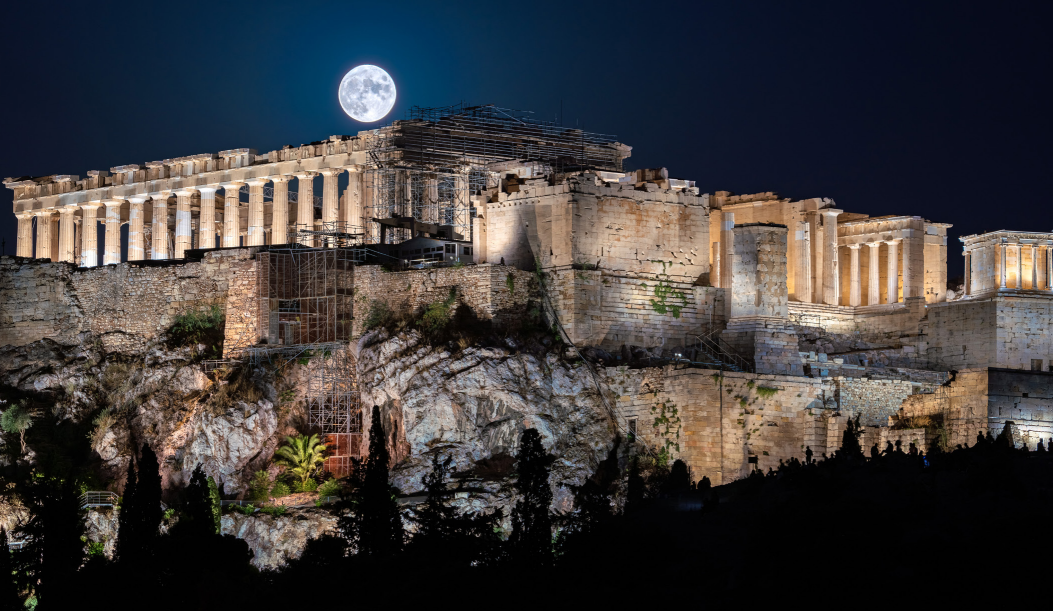
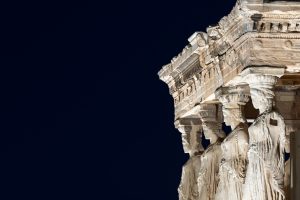 Photos: Gavriil Papadiotis
Photos: Gavriil Papadiotis
Project title: Athens Acropolis Relighting
Project location: Athens, Greece
Lighting designer: Eleftheria Deko
Selected by: Janet Lennox Moyer, owner, Jan Moyer Design
Why did you select this project as a wonder?
There are some architectural wonders that stay in your psyche long after your visit. As a 16-year-old exchange student living in Greece, I had the amazing opportunity to walk throughout the Acropolis. Many years later, I was introduced to the lighting designer, Eleftheria Deko, by Patrick Harders of Sterling Lighting, first via Zoom with her explaining how she redesigned the now-defunct lighting of this historical architectural archaeological site. Later, I spent several days with her, and she talked about her work—how she decided on the lighting for each of the structures on the Attica plateau and varying the shades of white light and the amounts of light in various areas. Eleftheria explained that none of the equipment could be “attached,” nor hinder any piece of the historical sites, and how she brought out the luster of the materials using varying lighting techniques. She and her team spent countless hours doing mock-ups, giving presentations to the city fathers to get approvals and night after night of aiming and setting light levels. Visible throughout most of the 15-sq mile city of Athens, Eleftheria was sensitive to everyone looking at this amazing site from all viewpoints.
This complex includes four hills: Lycabettus, Hill of the Nymphs, Pnyx and Philopappos, with multiple structures and sculptures including the Parthenon, Propylaea, Temple of Athena Nike, Erechtheion, Statue of Athena Promachos, Theatre of Dionysus as well as multiple walks and colonnaded walkways, totaling over 40 sacred sites. During my visit in 1969, I came at night and experienced a light show that included a story about one of the many invasions over the thousands of years of occupation. This experience clearly influenced my decision to become a lighting designer.
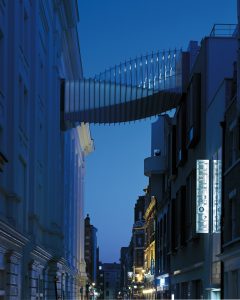
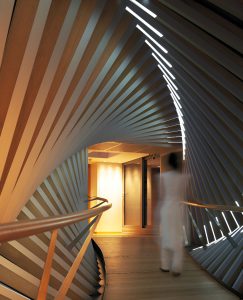
Photos: Speirs Major Light Architecture
Project title: Bridge of Aspiration
Project location: London
Lighting designer: Speirs Major Light Architecture
Selected by: Amardeep M. Dugar, founding principal, Lighting Research & Design
Why did you select this project as a wonder?
The Bridge of Aspiration was designed to provide the dancers of the Royal Ballet School with a direct link to the Grade-1 listed Royal Opera House. The bridge successfully addresses various complex contextual issues and is seamlessly integrated with the buildings it links, while standing out as an independent architectural element. It consists of 23 concentric square aluminum portals supported from a stainless-steel spine beam, which rotate in a sequence to accommodate the skewed alignment above Floral Street in Covent Garden. The unique design of the bridge, with its twisted corridor and different landing points, reflects the fluidity and grace of the dancers who use it, while maintaining a simple geometric and structural integrity. The entire bridge was prefabricated, allowing for a swift two-hour installation.
Rather than being designed as a prominent feature visible from the street, the bridge was intended to be a subtle element after dark, as per the Planning Authority’s requirements. The lighting design plays a crucial role in capturing and enhancing the bridge’s sinuous form, seamlessly blending with the structure and enhancing the experience of those crossing it. During the day, sunlight filters through the glazed intervals between the portals, with opaque glass on two façades to ensure privacy. This creates a fleeting and shadowy appearance of the dancers from the outside. At night, electric light is used to highlight the twists in the bridge’s form.
The lighting design incorporates 57 bespoke L-shaped luminaires, which become invisible when switched off. These luminaires are made of two square-section, mitred acrylic pieces integrated into the corners of the aluminium frames. Each luminaire is equipped with two 1.2-W, white LED units that evenly illuminate the acrylic using the principle of total internal reflection. An ephemeral quality is maintained on the underside of the structural beam with its shadow rendered in a soft and cool glow. The lighting design ensures that the bridge maintains a soft and subtle image, in line with its intended aesthetic.
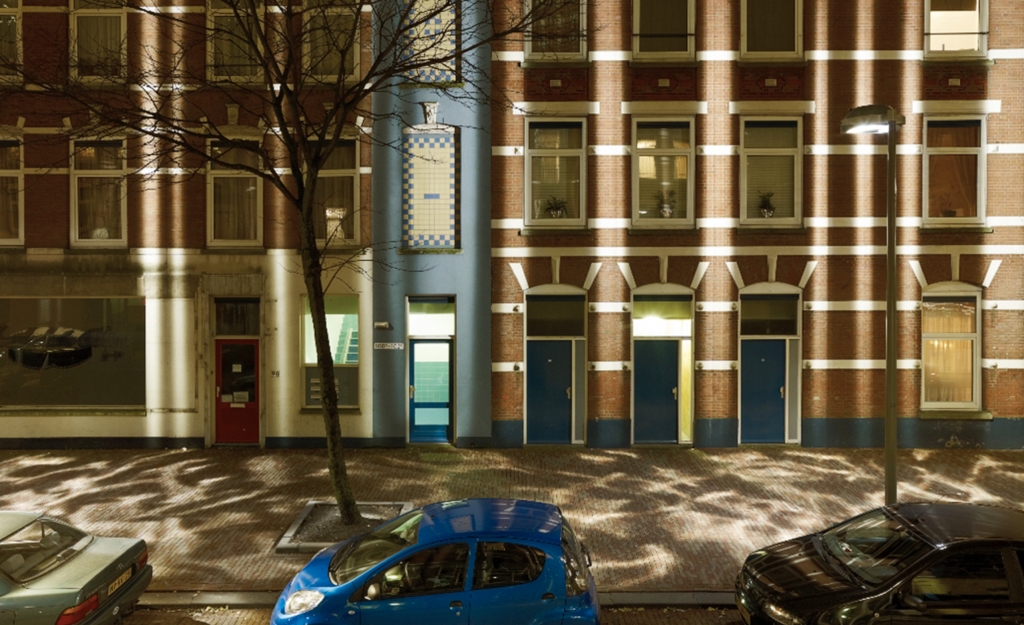
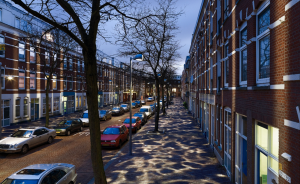
Photos: ©Studio Hans Wilschut
Project title: Broken Light
Project location: Rotterdam, The Netherlands
Lighting designer: Rudolph Teunissen, Daglicht & Vorm
Selected by: Andrea Hartranft, principal, Hartranft Lighting Design
Why did you select this project as a wonder?
Broken Light is a collaborative effort by artists, lighting designers, urban planners and historians, aimed at transforming a crime-ridden neighborhood through the use of light. Light is applied to exterior vertical surfaces in a rhythmic pattern of columns designed to give the sense of interiors brought outside. Light is also applied to the sidewalks as projected patterns, producing a watery effect. According to the designers, “This project is about using light to reconquer public space.” The design required that the existing street poles be replaced with custom-designed projection fixtures—half with upgraded light standards, all with high CRI metal halide projectors, used to project the sculpted light onto vertical structures and sidewalks.
The project exemplifies the power that light has to transform. I loved that the municipality recognized the role that lighting could play in this refurbishment of a troubled area, and rather than flooding the streets with glare and extreme light levels, an opportunity was provided to create an “atmosphere of peace and tranquility.” With no standout architecture to rely upon, it is the use of light, and darkness, that elevates an otherwise ordinary street. I applaud the perseverance of the design team to demonstrate “that lighting design and art are able to improve social and economical strength.”
The pride and joy expressed by the designers when they were presented with the 2012 IALD Radiance Award was evident. They were so invested in the success of the design and the positive impact on the neighborhood that they had gone above and beyond, championing their concepts, and helping to raise funding. As they told their story, their emotions were our emotions, and frankly, their pride became our pride. It was a moving experience then, and I still remember its power now.
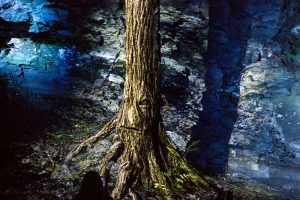
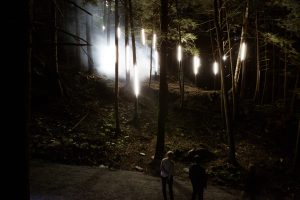
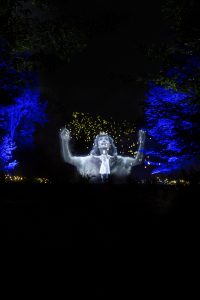
Photos: Moment Factory/Foresta Lumina
Project title: Foresta Lumina
Project location: Coaticook, Québec, Canada
Lighting designer: Moment Factory
Selected by: Jennifer Brons, research program director, Light and Health Research Center, Mount Sinai Icahn School of Medicine
Why did you select this project as a wonder?
While the eponymous ice cream may draw some to Coaticook, since 2014, Foresta Lumina has been attracting people of all ages with the power of light to create a mysterious and otherworldly experience after dark. Located in Québec, near where Vermont turns into New Hampshire, Gorge Park in Coaticook is transformed at night with an artful, immersive multimedia sensory experience. Montreal-based media and design firm Moment Factory worked closely with the community to design an experience inspired by local mythology regarding woodland fairies and other mystical beings.
Before arriving at the site, the stage is set in the village of Coaticook, where post-top streetlights are festooned with twinkling lantern clusters, coordinated with speakers playing mysterious instrumental compositions. When entering the Foresta Lumina experience, visitors cross a foggy portal and an alarmingly bouncy suspension bridge, and thus onto an otherworldly experience of light.
Visitors make their way around the forest path to a succession of theatrical sound and light experiences. Some scenes are composed of projections onto woodland surfaces, mist or other diaphanous surfaces. In other scenes, saturated color or laser projections are used to contribute to the otherworldly atmosphere. Several of the waypoints invite visitors to play with light and sound. After immersing oneself in the experience the first time, take a second loop to observe the effect of the light on visitors, whose joyous screams can be heard in various languages.
The immense success of Foresta Lumina to attract visitors to this corner of Québec has led communities around the world to seek Moment Factory’s guidance in developing their own “lumina” experiences. These include installations nestled in historic forts, castles, zoos, seashores and other forests in Canada, the U.S., France and Asia. This recent winter, you may have visited temporary installations of Astra Lumina developed for botanical gardens in both Los Angeles and New York City.
Allow one to two hours to wander the original Foresta Lumina…but watch out for those uneven woodland surfaces when you’re carried away with the enchantment and wonder created by Moment Factory.
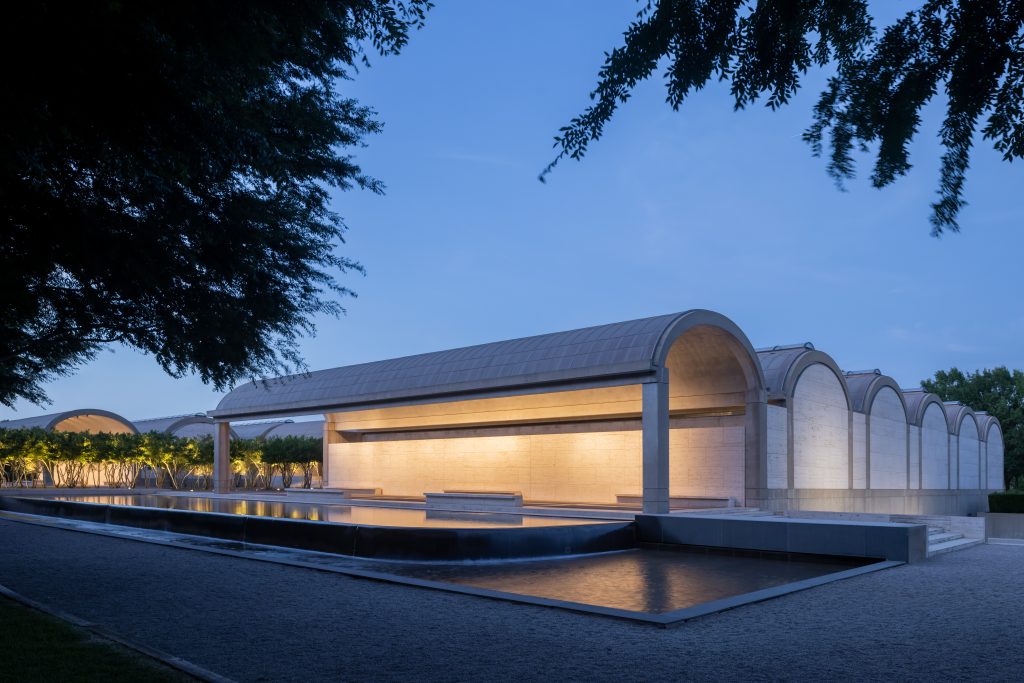
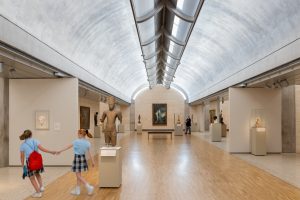
Photos: Iwan Baan
Project title: Kimbell Art Museum
Project location: Fort Worth, TX
Lighting designer: Richard Kelly
Selected by: Charles G. Stone II, founder and president Fisher Marantz Stone
Why did you select this project as a wonder?
Art museums may be the most challenging building type for an architectural lighting designer. This is because the constituents in a museum range from the board of trustees to donors, curators, conservators, artists and the architect— each with an opinion about lighting, often nuanced and well-articulated. Furthermore, museums require the marriage of daylight and electric light with architecture in the context of prescribed technical and program requirements.
My first visit to the Kimbell Museum in Fort Worth, TX, was 40 years ago—a stop on a study tour of lighting in important American museums. I arrived, light meter in hand, intending to unravel the lighting genius of Richard Kelly and the luminous secrets of Louis Kahn’s architectural masterpiece. After an hour with the light meter, one realizes that typical daylight illumination on the walls ranges from 20 to 30 lux. The paintings are not really illuminated by daylight; instead, a curiously pleasant blend of warm light from track fixtures mixes with daylight reflected from the thin shell lavender-grey concrete cycloid vaults above. This is the cycloid that transfixed Galileo, easily supports its own weight and is here revealed to be an ideal reflector for the second bounce of daylight from the perforated aluminum double wing suspended precisely in the middle of the vaults. Lunette skylights at the ends of the vaults make them float in the air. There’s a lot of looking up to be done here.
The basic materials used in the museum are those of modernism: concrete, steel, aluminum, timber and glass. Fifty years later, we’re designing lighting for buildings using the same palette of materials. How is it that the color and finish of these disparate materials complement each other so well? In 1969, Richard Kelly had no computer tools to run lux-level calculations, nor prepare renders or calculate luminance mapping of the vaults. And yet, these vaults are evenly illuminated all day long. Reiterative mock-ups of the suspended reflector were carried out on site until the perforated aluminum solution was achieved.
Since opening in 1972, countless architects, lighting designers and scholars have made a pilgrimage to the Kimbell Museum, seeking to understand how such a magical outcome was achieved. It is an inspiring testament to successful collaboration among lighting designer, architect, engineer and a larger team.
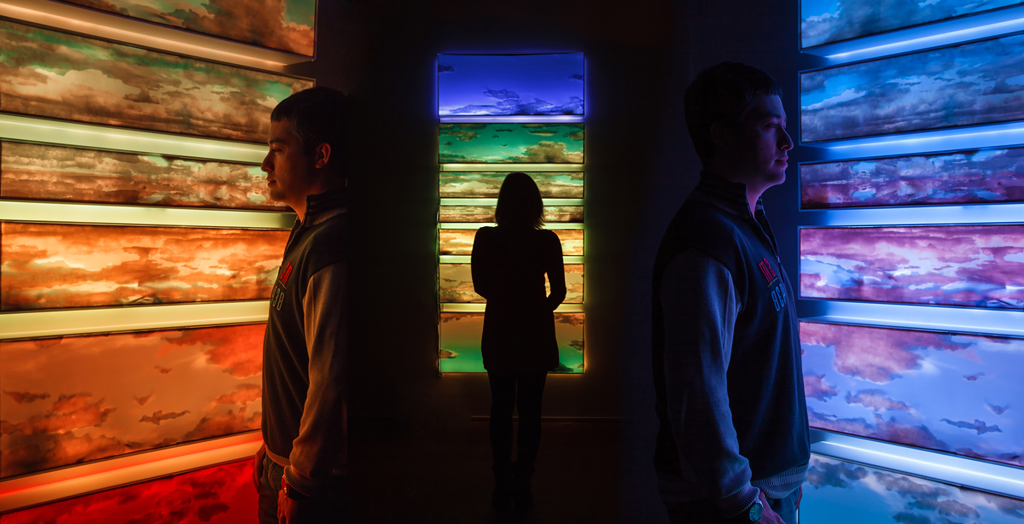
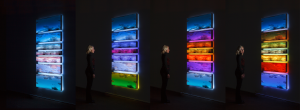
Photos: Arturo Ortiz
Project title: Skies
Project location: Portable, but the project is based on sky conditions around the globe.
Lighting designer: Maja Petric
Selected by: Robert M. White, director, Illuminart
Why did you select this project as a wonder?
Skies is a series of generative light art sculpture projects that are full of wonder because they literally exhibit how light, technology and lighting design can be combined into a deeply engaging and satisfying experience that relies on technology but is not about technology. These are not multimillion-dollar extravaganzas competing for attention in an overlit skyline. They are also not an example of overusing the latest lighting widget repeated on some vast scale. Skies is an appreciation and celebration of the sky with lighting as the critical element. It is a universal experience that requires no language to appreciate the artist’s vision.
The series starts with static transparencies of the Croatian skyline that are manipulated with color change. This is an elegantly simple concept that visually catches the eye and emotionally connects to the human experience of being part of Earth’s daytime cycle and the magic that can happen at sunrise and sunset. Skies has evolved into deeper content that explores elements like deforestation, pollution and war. The fascinating and creative aspect of this is how the artist uses math and algorithms to sample and gather pertinent images from the Internet. These are then combined into abstract compositions that capture the light and feeling of these diverse sky experiences without a literal duplication of images.
We can look at this today and say, “Ha! AI—of course!” but note that this series evolved back in 2016, which seems like a lifetime ago. Skies shows how an artist, using light and technology in an innovative way can create lighting pieces that are both relevant in content but also universal In experience.
For too long we have experienced color change that, though it may look cool, is devoid of actual content that will stand the test of time. Maja provides insight from which all of us in the lighting professions can draw inspiration, and the feeling of wonder these pieces provoke proves the concept.
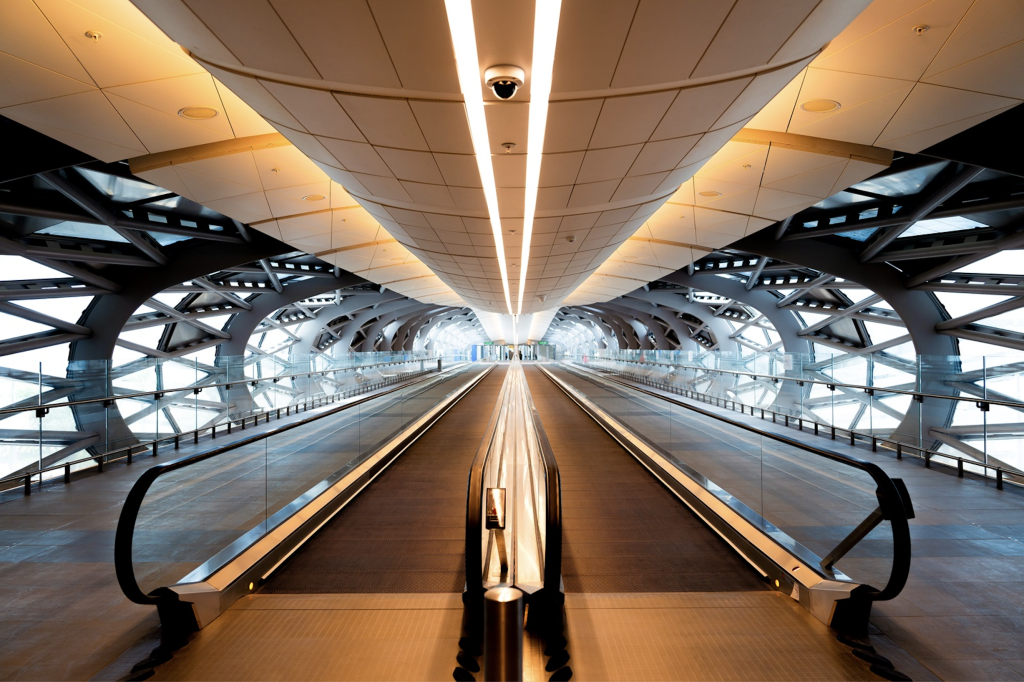
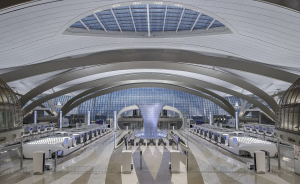
Photo: Kohn Pederson Fox Associates
Project title: Zayed International Airport
Project location: Abu Dhabi, UAE
Lighting designers: Kohn Pederson Fox Associates and Delmatic
Selected by: Mark Lien, industry relations consultant, IES
Why did you select this project as a wonder?
One of the pleasures I have experienced from being in our lighting industry is judging international lighting projects for DALI and Lighting Middle East. The illumination at Zayed International Airport Terminal A in Abu Dhabi, UAE, stands out, as it is integrated, with most luminaires providing function without distraction. Only the decorative products that enhanced the spaces are obvious, and the lighting serves to define the terminal’s architectural elements.
In addition to the aesthetics, my focus is also on energy and sustainability. The UAE is committed to net-zero carbon emissions by 2050, and Zayed Airport Terminal is reportedly the largest singular building ever to be rated globally, with a 3 Pearl rating from the Estidama Pearl Building Rating System, which evaluates sustainable building development practices. If the structure appears familiar, perhaps you have seen Mission: Impossible–Dead Reckoning with Tom Cruise running through Terminal A. They were able to film at the location prior to opening, and the visuals are spectacular.
This terminal is 742,000 sq meters (nearly 8 million sq ft), making it one of the largest terminals in the world. The DALI control system is the largest anywhere with approximately 230,000 DALI-controlled lamps, sensors, switches and modules. The system includes extensive daylight harvesting and occupancy-based controls. Lighting scenarios are activated automatically throughout the day. One unique feature is that the extensive arrival hall turnstiles used green and red LEDs that automatically activate via an interface with the immigration control portal.
It would be disturbing to know how much time I have spent in airports, but it strikes me how most of the processes are significantly antiquated. Automating them is progress, as it expedites and improves the passenger experience. This airport terminal is state of the art. The DALI control system interfaces with the building management system, emergency UPS, fire alarms and AV systems through BACnet/IP and variable frequency control strategies. A graphical user interface from Delmatic displays the operational status of every lamp, driver and emergency light across the network. It is an animated interface that presents granular data highlighting failures in real time.
This is not just the largest DALI system, it is one of the most substantial smart lighting control systems in the world. The physical scale of this project paves the way for others while improving the user experience. It also transcends most architectural projects in that it looks artistic, serving as a leading example of the modern art and science of lighting.


